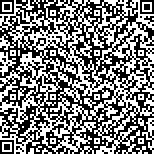Surface Sunny Ultraviolet Radiation and Biology Effect
- Article
- Figures
- Metrics
- Preview PDF
- Reference
- Related
- Cited by
- Materials
Abstract:
Ultraviolet radiation can be divided into three parts of the sun's radiation spectrum. The wavelengths of UV-A radiation range is from 320 to 400 nm. Ozone absorbs very little of this part of the UV spectrum. Ultraviolet-A radiation is needed by humans for the synthesis of vitamin D.However,UV-A causes photoaging (toughening of the skin),degradation of the immune system, and to a lesser degree, reddening of the skin and cataract formation. Ultraviolet B ranges in wavelength from 290 to 320 nm. Ozone absorbs much of the shorter wavelength radiation, but this absorption weakens as 320 nm is approached. Plants and animals are particularly affected by this part of the UV spectrum. Ultraviolet B can redden the skin (erythema) and reduce vitamin D synthesis in a short term and may cause skin cancer, cataracts, and may degrade the immune system in the long term. Ultraviolet C is characterized by wavelengths of less than 290 nm. Although highly dangerous to plants and animals, this part of the UV spectrum is completely absorbed by stratospheric ozone and does not reach the earth′s surface.
Keywords:
Project Supported:
Clc Number:


Mobile website









